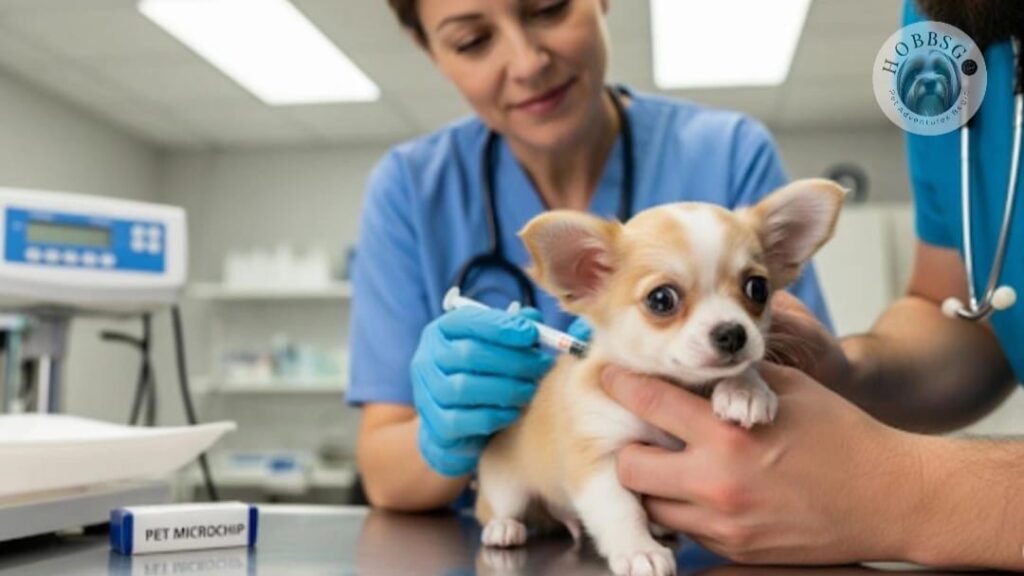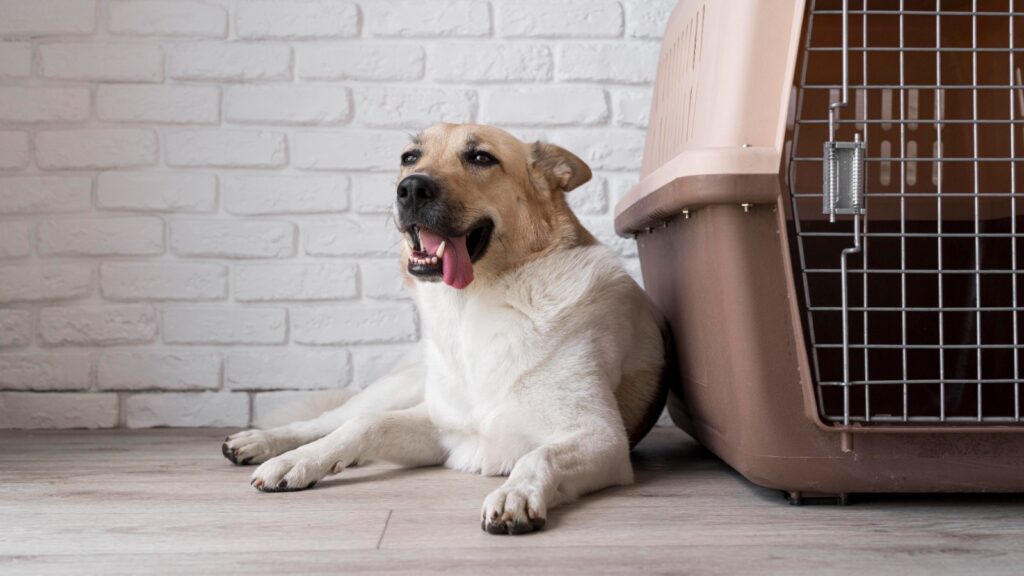A veterinarian installs a small, grain-sized electronic microchip in your pet.
Benefits of Pet Microchipping
- Permanent identification of your pet—unlike a collar or tag, a microchip can’t be lost, removed, or damaged.
- Proof of Ownership—A registered microchip provides legal proof about your pet ownership
- Chance of reunion in case your pet gets lost – A vet can scan the chip to find your contact information if your pet gets lost somewhere.
- Deters theft—Microchips make it easier for stolen or lost pets to return to their home, as the pet’s ownership can be verified.
- International Travel—It’s a must-have requirement for travelling with your pet to different countries.
Is It Safe to Microchip Your Pet?
Yes, it is quite safe to microchip your pet. It is made up of biocompatible material; therefore, it won’t cause any reaction in your pet. It has no internal power source, like batteries, and doesn’t emit any signals. It only activates when the special scanner passes over it.
However, there could be a few minor side effects, which is very rare, like
- Temporary swelling
- Infection
- Microchip migration (the chip moving from its original location)
Please visit your vet if your pet gets any of these symptoms.
How is a microchip installed?
A veterinarian does the microchip implantation, just like any other regular vaccine. The microchip is a 15-digit, ISO-compliant type adhering to Standard 11784/11785.
Here’s a step-by-step overview of the process:
- The vet first scans your pet to make sure that it doesn’t already have a microchip.
- The vet scans the new microchip to ensure it’s working and that its unique identification number (UIN) matches the barcode label.
- The vet cleans implantation site, which is typically the loose skin between the shoulder blades, with an alcohol swab, which helps to reduce the risk of any infection.
- The veterinarian gently raises a fold of slack skin between the shoulder blades to tent the skin and injects the microchip into the tissue, ensuring it’s on the tissue and not inserted into the muscle.
- Finally, to ensure the chip is in the correct position and functioning properly, the vet scans your pet again.
Microchip Registration
Once a vet implants a microchip in your pet, you must register its unique identification code. There are several private companies and organisations in India that offer registration services, such as PETstrack, HomeAgain India, and MyPetGo.
To register, you’ll need to provide the following information:
- Microchip number of your pet, which is provided by your veterinarian.
- Your contact details, which should have your full name, address, phone number, and email.
- Your pet’s details, which should include name, species (e.g., canine), breed (e.g., Lhasa Apso), age, date of birth, sex, color, and any other distinct markings.
- A recent photo of your pet.
- Your veterinarian’s details.
- The microchip certificate or other documentation
You can fill out this information online through their registration portal and pay the fees, which can cost you from 1000 to 1500 INR.
Once registered, you will receive a confirmation via email or sometimes a physical certificate. This confirmation will include your pet’s microchip number and confirmation that your details are linked.
Registration is not needed when travelling abroad. You can register if you want to deter theft. You only need to get a microchip for your pet, and the vet will issue a physical certificate for it.
For more information, you can contact us at
https://hobbsgo.com/contact/
FAQs
Is microchipping my pet safe?
Yes, microchipping your pet is totally safe and can sometimes have temporary side effects.
What is microchip used for?
A microchip is used in several ways to help pets travel internationally; it helps to prove the ownership of your pet, find your pet when lost, and provide permanent identification.
What does a microchip include?
Microchip includes the details of your pet, owner, and sometimes vet.



